Passengers 274 Survivors 0 Date 3 July 1988 Total fatalities 290 (all) Passenger count 274 | Crew 16 Aircraft type Airbus A300B2-203 Survivor 0 | |
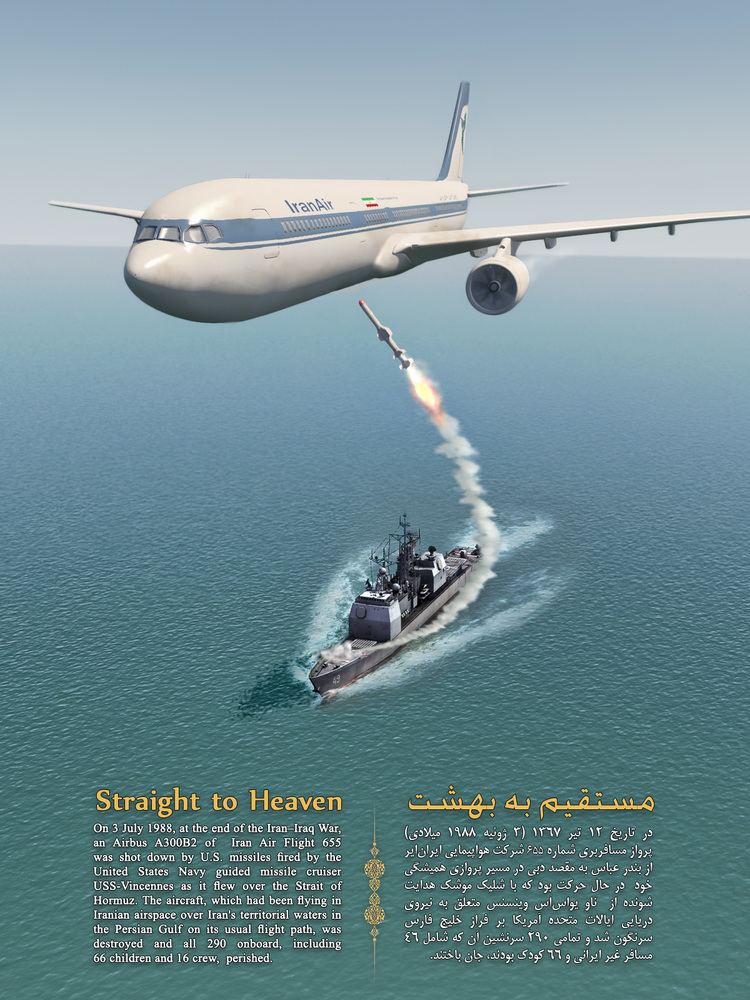 | ||
Summary Shot down by USS Vincennes Similar Korean Air Lines Flight 007, American Airlines Flight 191, Air India Flight 182, Charkhi Dadri mid‑air co, Turkish Airlines Flight 981 | ||
Iran Air Flight 655 was an Iran Air passenger flight from Tehran to Dubai. On 3 July 1988, the aircraft operating on this route was shot down by the United States Navy guided missile cruiser USS Vincennes under the command of William C. Rogers III. The incident took place in Iranian airspace, over Iran's territorial waters in the Persian Gulf, and on the flight's usual flight path. The aircraft, an Airbus A300 B2-203, was destroyed by SM-2MR surface-to-air missiles fired from Vincennes. All 290 people on board died. The cruiser Vincennes had entered Iranian territorial waters after one of its helicopters drew warning fire from Iranian speedboats operating within Iranian territorial limits.
Contents
- Background
- Shootdown of Flight 655
- Nationalities of the victims
- US government accounts
- Iranian government account
- Independent sources
- Radio communication
- Potential factors
- Critique of US media coverage
- Aftermath
- Post tour of duty medals
- References
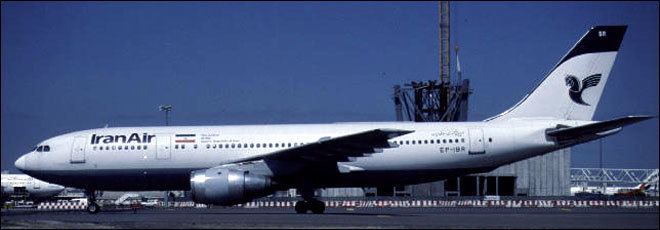
According to the United States government, the crew incorrectly identified the Iranian Airbus A300 as an attacking F-14A Tomcat fighter, a plane made in the United States and operated at that time by only two forces worldwide, the United States Navy and the Islamic Republic of Iran Air Force. While the Iranian F-14s had been supplied by manufacturer Grumman in an air-to-air configuration only in the 1970s, the crew of Vincennes had been briefed when entering the region that the Iranian F-14s carried unguided bombs as well as Maverick missiles and unguided rockets. The Vincennes crew made ten attempts to contact the crew of the flight on military and civilian radio frequencies, but received no response. The International Civil Aviation Organization said that the flight crew should have been monitoring the civilian frequency.
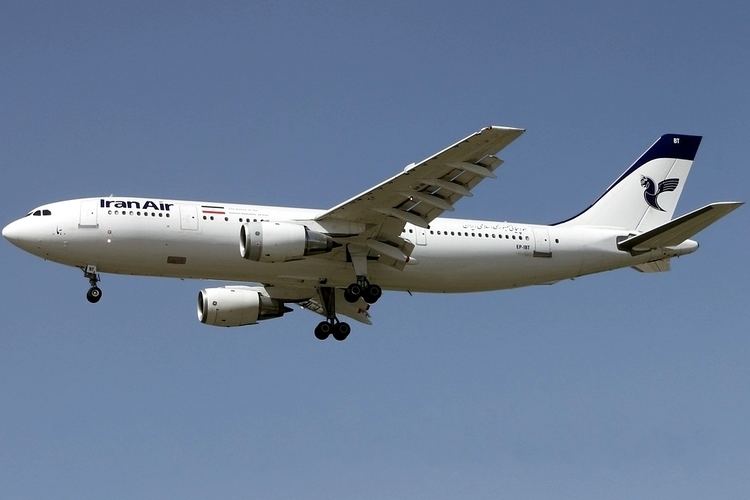
According to the Iranian government, Vincennes negligently shot down the civilian aircraft: the airliner was making IFF squawks in Mode III (not Mode II used by Iranian military planes), a signal that identified it as a civilian craft. The event generated a great deal of criticism of the United States. Some analysts blamed the captain of Vincennes, who had entered Iran's waters, for reckless and aggressive behavior in a tense and dangerous environment.
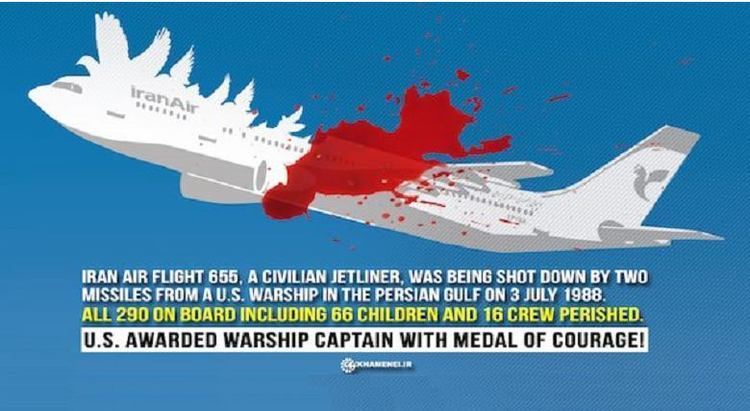
In 1996, the United States and Iran reached a settlement at the International Court of Justice which included the statement "...the United States recognized the aerial incident of 3 July 1988 as a terrible human tragedy and expressed deep regret over the loss of lives caused by the incident...". As part of the settlement, the United States did not admit legal liability or formally apologize to Iran but agreed to pay on an ex gratia basis US$61.8 million, amounting to $213,103.45 per passenger, in compensation to the families of the Iranian victims.
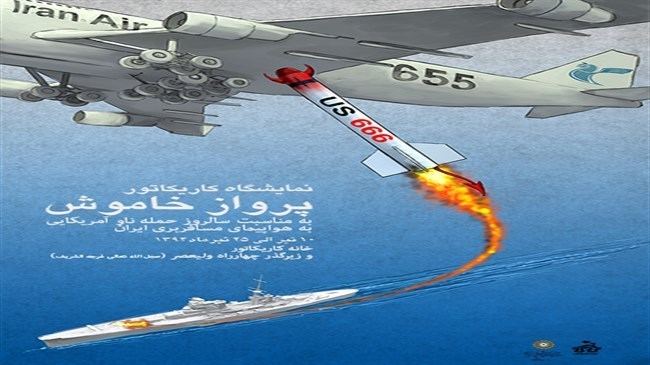
Iran Air continues to use flight number 655 on the Tehran to Dubai route as a memorial to the victims. This event ranks tenth among the deadliest disasters in aviation history; the incident retains the record for highest death toll of any aviation incident in the Persian Gulf.
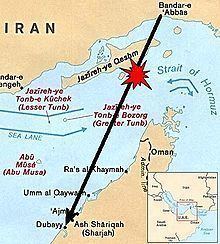
Background
In 1984, the war between Iraq and Iran had expanded to include air attacks against oil tankers and merchant shipping of neighboring countries, some of whom were providing aid to Iraq by shipping Iraqi oil. The Flight 655 incident occurred a year after the Iraqi Air Force attack on the U.S. Navy guided-missile frigate USS Stark on 17 May 1987, which killed 37 American sailors. U.S. naval forces had also exchanged gunfire with Iranian gunboats in late 1987, and the U.S. Navy guided-missile frigate USS Samuel B. Roberts had struck an Iranian sea mine in April 1988. Two months before the incident the US had engaged in Operation Praying Mantis, resulting in the sinking of the Iranian frigate Sahand. Tensions were therefore high in the Strait of Hormuz at the time of the incident with Flight 655.
In response to the pattern of attacks on shipping, the US Joint Chiefs of Staff issued a NOTAM on 8 September 1987 warning all Persian Gulf countries that civilian aircraft must monitor 121.5 MHz VHF aka the International Air Distress [IAD] frequency, or 234.0 MHz UHF aka the Military Air Distress [MAD] frequency, and be prepared to identify themselves to US Navy ships and state their intentions.
On 29 April 1988, the U.S. expanded the scope of its navy's protection to all friendly neutral shipping in the Persian Gulf outside declared exclusion zones, setting the stage for the shoot-down incident. At about the same time, USS Vincennes was rushed to the area on a short-notice deployment, as a result of high-level decisions, to compensate for the lack of AWACS coverage, which was hampering U.S. monitoring of the southern Persian Gulf. Vincennes, fitted with the then-new Aegis Combat System and under the command of Captain William C. Rogers III, departed San Diego on 25 April 1988 and arrived in Bahrain on 29 May 1988.
As the Strait of Hormuz at its narrowest is 21 nautical miles (39 km) wide, in order to traverse the strait, ships must stay within sea lanes that pass through the territorial waters of Iran and Oman under the transit passage provisions of customary Law of the Sea. It is therefore normal for ships, including warships, entering or leaving the Persian Gulf to transit Iranian territorial waters. During the Iran–Iraq War the Iranian forces frequently boarded and inspected neutral cargo ships in the Strait of Hormuz in search of contraband destined for Iraq. While legal under international law, these inspections added to the tensions in the area.
Shootdown of Flight 655
The plane, an Airbus A300B2 (registration EP-IBU), flown by Captain Mohsen Rezaian, 37, a veteran pilot with 7,000 hours of flight time, left Bandar Abbas at 10:17 am Iran time (UTC +03:30), 27 minutes after its scheduled departure time. It should have been a 28-minute flight. After takeoff, it was directed by the Bandar Abbas tower to turn on its transponder and proceed over the Persian Gulf. The flight was assigned routinely to commercial air corridor Amber 59, a 20-mile (32 km)-wide lane on a direct line to Dubai airport. The short distance made for a simple flight pattern: climb to 14,000 feet (4,300 m), cruise for a short time, and descend into Dubai. The airliner was transmitting the correct transponder "squawk" code typical of a civilian aircraft and maintained radio contact in English with appropriate air traffic control facilities.
On the morning of 3 July, Vincennes was passing through the Strait of Hormuz returning from an escort duty. A helicopter from USS Vincennes reported that it received small arms fire from Iranian patrol vessels as it observed from high altitude. The cruiser moved to engage the Iranian vessels, in the course of which they all violated Omani waters and left after being challenged and ordered to leave by a Royal Navy of Oman warship. Vincennes then pursued the Iranian gunboats, entering Iranian territorial waters to open fire. USS Sides and USS Elmer Montgomery were nearby. Thus, USS Vincennes was in Iranian territorial waters at the time of the incident, as admitted by the US government in legal briefs and publicly by Admiral William Crowe on Nightline. Admiral Crowe denied a U.S. government coverup of the incident and claimed that Vincennes's helicopter was over international waters initially, when it was first fired upon by the Iranian gunboats.
Contrary to the accounts of various USS Vincennes crew members, the shipboard Aegis Combat System aboard Vincennes recorded that the Iranian airliner was climbing at the time and its radio transmitter was "squawking" on the Mode III civilian code only, rather than on military Mode II.
After receiving no response to multiple radio challenges, USS Vincennes fired two surface-to-air missiles at the airliner. One of the missiles hit the airliner, which exploded and fell in fragments into the water. Everyone on board was killed.
The event triggered an intense international controversy, with Iran condemning the U.S. attack. In mid-July 1988, Iranian Foreign Minister Ali Akbar Velayati asked the United Nations Security Council to condemn the United States saying the U.S. attack "could not have been a mistake" and was a "criminal act", an "atrocity" and a "massacre". George H. W. Bush, at the time vice president of the United States in the Reagan administration, defended his country at the United Nations by arguing that the U.S. attack had been a wartime incident and that the crew of Vincennes had acted appropriately to the situation. The Soviet Union asked the U.S. to withdraw from the area and supported efforts by the Security Council to end the Iran–Iraq War. Most of the remainder of the 13 delegates who spoke supported the U.S. position, saying one of the problems was that a 1987 resolution to end the Iran-Iraq war had been ignored. Following the debate, Security Council Resolution 616 was passed expressing "deep distress" over the U.S. attack and "profound regret" for the loss of human lives, and stressing the need to end the Iran–Iraq War as resolved in 1987.
Nationalities of the victims
According to the documents submitted to the International Court of Justice by Iran, the aircraft was carrying 290 people: 274 passengers and a crew of 16. Of these 290, 254 were Iranian, 13 were Emiratis, 10 were Indians, six were Pakistanis, six were Yugoslavs and one was an Italian.
U.S. government accounts
According to the U.S. government, Vincennes mistakenly identified the Iranian airliner as an attacking military fighter. The officers misidentified the flight profile being flown by the Airbus A300B2 as being similar to that of an F-14A Tomcat during an attack run; however, the ship's own Aegis Combat System recorded the flight plan of the Iranian airliner as climbing (not descending as in an attack run) at the time of the incident. The commercial flight had originated at Bandar Abbas, which served dual roles as a base for Iranian F-14 operations and as a hub for commercial, civilian flights. According to the same reports, Vincennes tried unsuccessfully to contact the approaching aircraft, seven times on the military emergency frequency and three times on the civilian emergency frequency, but never on air traffic control frequencies. This civilian aircraft was not equipped to pick up military frequencies and the messages on the civilian emergency channel could have been directed at any aircraft. More confusion arose as the hailed speed was the ground speed, while the pilot's instruments displayed airspeed, a 50-knot (93 km/h) difference.
At 10:24 am, with the civilian jet 11 nautical miles (20 km) away, Vincennes fired two SM-2MR surface-to-air missiles, one of which hit the airliner. After the attack, the Vincennes' crew realized that the plane had been a civilian airliner.
This version was finalized in a report by Admiral William Fogarty, entitled Formal Investigation into the Circumstances Surrounding the Downing of Iran Air Flight 655 on 3 July 1988 (the "Fogarty report") Only parts of this report have been released (part I in 1988 and part II in 1993). The Fogarty report stated, "The data from USS Vincennes tapes, information from USS Sides and reliable intelligence information, corroborate the fact that [Iran Air Flight 655] was on a normal commercial air flight plan profile, in the assigned airway, squawking Mode III 6760, on a continuous ascent in altitude from take-off at Bandar Abbas to shoot-down".
When questioned in a 2000 BBC documentary, the U.S. government stated in a written answer that they believed the incident may have been caused by a simultaneous psychological condition amongst the 18 bridge crew of Vincennes called 'scenario fulfillment', which is said to occur when persons are under pressure. In such a situation, the men will carry out a training scenario, believing it to be reality while ignoring sensory information that contradicts the scenario. In the case of this incident, the scenario was an attack by a lone military aircraft.
Iranian government account
According to the Iranian government, the shooting down of IR 655 by Vincennes was an intentionally performed and unlawful act. Even if there was a mistaken identification, which Iran has not accepted, it argues that this constituted gross negligence and recklessness amounting to an international crime, not an accident.
In particular, Iran expressed skepticism about claims of mis-identification, noting that Vincennes had advanced Aegis radar that correctly tracked the flight and its Mode III beacon; two other U.S. warships in the area, Sides and Montgomery, identified the aircraft as civilian; and the flight was well within a recognized international air corridor. It also noted that the crew of Vincennes was trained to handle simultaneous attacks by hundreds of enemy aircraft. Iran found it more plausible that Vincennes "hankered for an opportunity to show its stuff".
According to Iran, the U.S. had previously issued a Notice to Airmen (NOTAM) warning aircraft that they were at risk of "defensive measures" if they had not been cleared from a regional airport and if they came within 5 nautical miles (9.3 km) of a warship at an altitude of less than 2,000 feet (610 m). IR 655 had been cleared from a regional airport and was well outside those limits when it was attacked. Even if the plane had been an Iranian F-14, Iran argued that the U.S. would not have had the right to shoot it down, as it was flying within Iranian airspace and did not follow a path that could be considered an attack profile, nor did it illuminate Vincennes with radar. Prior to the incident, Vincennes had entered Iranian territorial waters, and was inside Iranian territorial waters when it launched its missiles. Even if the crew of IR 655 had made mistakes, the U.S. Government remained responsible for the actions of the crew of Vincennes, under international law.
Iran pointed out that in the past "the United States has steadfastly condemned the shooting down of aircraft, whether civil or military, by the armed forces of another State" and cited El Al Flight 402, Libyan Arab Airlines Flight 114 and Korean Air Lines Flight 007, among other incidents. Iran also noted that when Iraq attacked USS Stark, United States found Iraq fully responsible on the grounds that the Iraqi pilot "knew or should have known" that he was attacking a U.S. warship.
Independent sources
John Barry and Roger Charles of Newsweek wrote in their 13 July 1992 article that Rogers acted recklessly and without due care. However, the subsequent Fogarty report concluded that Rogers acted in a prudent manner based on the information available to him, and the short time frame involved. He also acted within the prescribed rules of engagement for USN warship captains in that situation.
They also accused the U.S. government of a cover-up, but Admiral Crowe denied any knowledge. An analysis of the events by the International Strategic Studies Association described the deployment of an Aegis cruiser in the zone as irresponsible and felt that the value placed on Aegis cruisers by the US Navy had played a major part in the setting of a low threshold for opening fire. Vincennes had been nicknamed 'Robocruiser' by crew members and other US Navy ships, both in reference to its Aegis system, and to the supposed aggressive tendencies of its captain.
The International Court of Justice case relating to the Airbus attack, "the Aerial Incident of July 3, 1988, (Islamic Republic of Iran v. United States of America)", was dropped on 22 February 1996 following settlement and reparations by the United States.
Three years after the incident, Admiral William J. Crowe admitted on American television show Nightline that Vincennes was inside Iranian territorial waters when it launched the missiles. This contradicted earlier Navy statements. The International Civil Aviation Organization (ICAO) report of December 1988 placed the USS Vincennes (CG-49) well inside Iran's territorial waters.
Commander David Carlson, commanding officer of USS Sides, the warship stationed nearest to Vincennes at the time of the incident, is reported to have said that the destruction of the aircraft "marked the horrifying climax to Captain Rogers's aggressiveness, first seen four weeks ago". His comment referred to incidents on 2 June, when Rogers had sailed Vincennes too close to an Iranian frigate undertaking a lawful search of a bulk carrier, launched a helicopter within 2–3 miles (3.2–4.8 km) of an Iranian small craft despite rules of engagement requiring a four-mile (6.4 km) separation, and opened fire on small Iranian military boats. Of those incidents, Carlson commented, "Why do you want an Aegis cruiser out there shooting up boats? It wasn't a smart thing to do." He also said that Iranian forces he had encountered in the area a month prior to the incident were "pointedly non-threatening" and professional. At the time of Rogers's announcement to higher command that he was going to shoot down the plane, Carlson is reported to have been thunderstruck: "I said to folks around me, 'Why, what the hell is he doing?' I went through the drill again. F-14. He's climbing. By now this damn thing is at 7,000 feet." Carlson thought Vincennes might have more information, and was unaware that Rogers had been wrongly informed that the plane was diving. Carlson is also reported to have written in the U.S. Naval Proceedings that he had "wondered aloud in disbelief" on hearing of Vincennes's intentions, speculating that the ship, known as "Robo Cruiser" for its aggressiveness, "felt a need to prove the viability of Aegis in the Persian Gulf, and that they hankered for the opportunity to show their stuff."
Craig, Morales and Oliver, in a slide presentation published in M.I.T.'s Spring 2004 Aeronautics & Astronautics as the "USS Vincennes Incident", commented that Captain Rogers had "an undeniable and unequivocal tendency towards what I call 'picking a fight.'" On his own initiative, Rogers moved Vincennes 50 miles (80 km) northeast to join USS Montgomery. An angry Captain Richard McKenna, Chief of Surface Warfare for the Commander of the Joint Task Force, ordered Rogers back to Abu Musa, but Vincennes helicopter pilot, Lt. Mark Collier, followed the Iranian speedboats as they retreated north, eventually taking some fire:
...the Vincennes jumps back into the fray. Heading towards the majority of the speedboats, he is unable to get a clear target. Also, the speedboats are now just slowly milling about in their own territorial waters. Despite clear information to the contrary, Rogers informs command that the gunboats are gathering speed and showing hostile intent and gains approval to fire upon them at 0939. Finally, in another fateful decision, he crosses the 12-nautical-mile (22 km) limit off the coast and enters illegally into Iranian waters.
Radio communication
Throughout its final flight, IR655 was in radio contact with various air traffic control services using standard civil aviation frequencies, and had spoken in English to Bandar Abbas Approach Control seconds before Vincennes launched its missiles. According to the U.S. Navy investigation Vincennes at that time had no equipment suitable for monitoring civil aviation frequencies, other than the International Air Distress frequency. Subsequently U.S. Navy warships in the area were equipped with dialable VHF radios, and access to flight plan information was sought, to better track commercial airliners.
The official ICAO report stated that ten attempts were made to contact Iran Air flight 655: seven on military frequencies and three on commercial frequencies, addressed to an "unidentified Iranian aircraft" and giving its speed as 350 knots (650 km/h), which was the ground speed of the aircraft their radar reported. The crew of the Iran Air 655, however, would have seen a speed of 300 knots (560 km/h) on their cockpit instruments, which was their indicated airspeed, possibly leading them to conclude that the Vincennes was talking to another aircraft. Both Sides and Vincennes tried contacting flight 655 on several civilian and military frequencies. International investigations concluded that the crew of IR655 assumed that the three calls that they received before the missiles struck must have been directed at an Iranian P-3 Orion (see below).
Potential factors
Critique of US media coverage
Robert Entman of George Washington University studied coverage surrounding the incident in U.S. media, comparing to the similar incident happened to Korean Air Lines Flight 007 (shot down by Soviet Union five years earlier). Using material from five sources (Time, Newsweek, The New York Times, The Washington Post and CBS Evening News), the research found clearly evident framing techniques used to demonize and blame the foreign enemy. He stated that by "de-emphasizing the agency and the victims and by the choice of graphics and adjectives, the news stories about the U.S. downing of an Iranian plane called it a technical problem while the Soviet downing of a Korean jet was portrayed as a moral outrage". The study is important not only because it demonstrates the ethnocentric media bias, but also because Entman included polling that appears to show the unbalanced coverage swayed public opinion against the Soviet Union and Iran.
In July 2014, when Malaysia Airlines Flight 17 was shot down in Ukraine, some commentators noted the discrepancy of U.S. official position and media coverage of the two similar incidents.
Aftermath
Inside Iran, this shoot-down was perceived as a purposeful attack by United States, signalling that US was about to enter direct war against Iran on the side of Iraq. In August 1988, a month after the shoot down, the Iranian government released a postage stamp illustrating the event, where the ship shooting the missile is painted with the colors of the American flag, and the map of Iran is burning on the background.
In February 1996, the United States agreed to pay Iran US$131.8 million in settlement to discontinue a case brought by Iran in 1989 against the U.S. in the International Court of Justice relating to this incident, together with other earlier claims before the Iran-United States Claims Tribunal. US$61.8 million of the claim was in compensation for the 248 Iranians killed in the shoot-down: $300,000 per wage-earning victim and $150,000 per non-wage-earner. In total, 290 civilians on board were killed, 38 being non-Iranians and 66 being children. It was not disclosed how the remaining $70 million of the settlement was apportioned, though it appears a close approximation of the value of a used A300 jet at the time.
The U.S. government issued notes of regret for the loss of human lives, but never apologized or acknowledged wrongdoing. George H. W. Bush, the vice president of the United States at the time commented on a separate occasion, speaking to a group of Republican ethnic leaders (7 Aug 1988) said: "I will never apologize for the United States — I don't care what the facts are... I'm not an apologize-for-America kind of guy." The quote, although unrelated to the downing of the Iranian air liner, has been attributed as such.
Bush used the phrase frequently during the 1988 campaign and promised to "never apologize for the United States" months prior to the July 1988 shoot-down and as early as January 1988.
The incident overshadowed Iran–United States relations for many years. The former CIA analyst Kenneth M. Pollack wrote: "The shoot-down of Iran Air flight 655 was an accident, but that is not how it was seen in Tehran." Following the explosion of Pan Am Flight 103 five months later, the British and American governments initially blamed the PFLP-GC, a Palestinian militant group backed by Syria, with assumptions of assistance from Iran in retaliation for Iran Air Flight 655.
Post-tour of duty medals
Despite the mistakes made in the downing of the plane, the men of the Vincennes were awarded Combat Action Ribbons for completion of their tours in a combat zone. The air-warfare coordinator on duty received the Navy Commendation Medal, but The Washington Post reported in 1990 that the awards were for his entire tour from 1984 to 1988 and for his actions relating to the surface engagement with Iranian gunboats. In 1990, Rogers was awarded the Legion of Merit "for exceptionally meritorious conduct in the performance of outstanding service as commanding officer ... from April 1987 to May 1989." The award was given for his service as the commanding officer of the Vincennes from April 1987 to May 1989. The citation made no mention of the downing of Iran Air 655.
